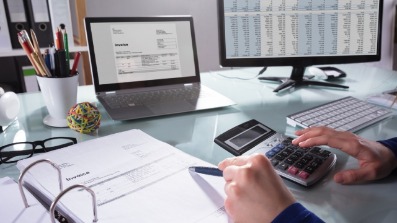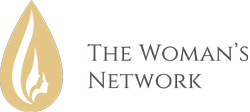Retained earnings are the business’ profits which are reserved for reinvestments (not distributed as dividends to shareholders). Shareholders’ equity is the combination of share capital plus retained earnings. List the values of each current and noncurrent asset component from the trial balance account, and add up the total current assets and How To Prepare A Balance Sheet the total noncurrent assets to calculate the grand total of assets. Current assets include assets that can be converted into cash as early as possible (typically within the next 12 months). As an entrepreneur or a business owner, one of the biggest mistakes you can make is not taking the time to study your company’s financial statements.
Pros say a ‘credit crunch’ may have already begun. 3 things to do to prepare – MarketWatch
Pros say a ‘credit crunch’ may have already begun. 3 things to do to prepare.
Posted: Tue, 02 May 2023 07:00:00 GMT [source]
Balance sheet totals can also be used when performing any kind of accounting calculations such as accounting ratios or creating projections for your business. You’ll also find fixed costs such as loans https://kelleysbookkeeping.com/single-step-income-statement/ and notes payable on a balance sheet. A balance sheet, like a profit and loss statement (income statement) and cash flow statement, is designed to be distributed to people outside of a company.
How to make a balance sheet using a simple balance sheet equation.
Balance sheets provide the basis for computing rates of return for investors and evaluating a company’s capital structure. Building a balance sheet is an important practice that must be conducted on either a quarterly or monthly basis. This financial statement provides insight into your company’s financial health by detailing your assets, liabilities, and shareholders’ equity. The purpose of creating a balance sheet is to know the financial position of your business, particularly what it owns and what it owes by the end of an accounting period (usually after every 12 months). Therefore, a balance sheet is also called a position statement or a statement of financial position—it provides a snapshot of all assets and liabilities at a particular point in time.

Noncurrent assets include assets that cannot be converted into cash within the next 12 months. Examples are plant/factory, machinery, furniture, and patents and copyrights (intangible assets). Once you have adjusted journal entries and posted them in the general ledger, construct a final trial balance. Trial balance is a report that lists general ledger accounts and adds up their balances.
Limitations of the Balance Sheet
Depending on the company, different parties may be responsible for preparing the balance sheet. For small privately-held businesses, the balance sheet might be prepared by the owner or by a company bookkeeper. For mid-size private firms, they might be prepared internally and then looked over by an external accountant. Last, a balance sheet is subject to several areas of professional judgement that may materially impact the report. For example, accounts receivable must be continually assessed for impairment and adjusted to reflect potential uncollectible accounts.
- Preferred stock is assigned an arbitrary par value (as is common stock, in some cases) that has no bearing on the market value of the shares.
- Equity is equal to assets minus liabilities and is the amount of owner capital invested in the firm.
- The balance sheet provides a snapshot of several important factors about a business.
- This includes cash, equipment, vehicles, supplies, inventory, prepaid items such as insurance, and the value of any buildings or land owned.
- A balance sheet format can be broken down into two main sections – assets on one side, and liability and equities on the other.
Each adjusting entry should be thoroughly documented, so that auditors can determine why it was made. The trial balance is a standard report in any accounting software package. If you are operating a manual system, then construct the trial balance by transferring the ending balance in every general ledger account to a spreadsheet. Knowing how to create and read a company’s balance sheet is essential to understanding the state of a business. You can generate a balance sheet for any specified period — many companies will create a multi-year balance sheet that compares how a firm has progressed over its recent history.
Step #3: Calculate the total assets
Mention shareholders’ equity on the right side of the balance sheet, right below the liabilities section. Shareholders’ equity, also known as the net worth of a company, shows the value of your business if it were to be liquidated or closed down. Arranging assets in the order of liquidity means putting assets that can be readily converted into cash at the top of the list and more permanent assets at the bottom.
The end goal of the income statement is to show a business’s net income for a specific reporting period. Total assets is calculated as the sum of all short-term, long-term, and other assets. Total liabilities is calculated as the sum of all short-term, long-term and other liabilities. Total equity is calculated as the sum of net income, retained earnings, owner contributions, and share of stock issued.
Long-term liabilities include capital leases, deferred compensation, and bank loans with a term of more than one year. Add up the current liabilities subtotal with the long-term liabilities subtotal to find your total liabilities. Check out how to analyze the numbers on your balance sheet to gain actionable insights into your financial health. Noncurrent liabilities are obligations that will take more than the next 12 months to be repaid. Prepare an income statement by taking income and expense items (such as sales) from the trial balance and organizing them in a proper format.

A balance sheet is a snapshot of the business financially at a specific point in time, such as the end of a quarter or year. The balance sheet provides a snapshot of several important factors about a business. Reviewing the statement will provide valuable financial information on the following factors. With Ramp on your team, it’s easier to create a balance sheet and close your books faster.

